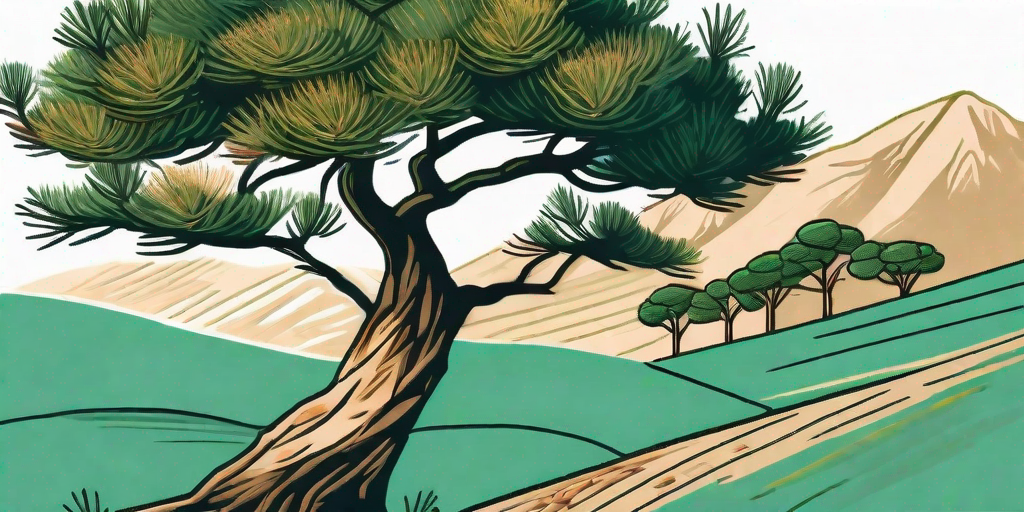
Ah, the Italian Stone Pine. It's not just a tree, it's a culinary adventure! This Mediterranean marvel is the source of the delectable pine nut, a staple in Italian cuisine. But there's more to this tree than meets the eye. Let's embark on a gastronomic journey and unravel the delicious secrets of the Italian Stone Pine.
The Italian Stone Pine: More Than Just a Pretty Tree
Known scientifically as Pinus pinea, the Italian Stone Pine is a sight to behold. Its umbrella-like canopy provides shade on hot summer days, while its sturdy trunk stands tall and proud. But this tree isn't just about aesthetics. It's a culinary goldmine!
The Italian Stone Pine produces pine nuts, which are actually seeds. These tiny treasures are packed with flavor and nutrition. They're used in a variety of Italian dishes, from pesto to pastries. But before we dive into the culinary uses of pine nuts, let's take a closer look at the tree itself.
The Tree's Anatomy
The Italian Stone Pine can grow up to 25 meters tall. Its bark is thick and deeply fissured, providing a protective layer against the elements. The leaves, or needles, are long and slender, arranged in pairs on the branches. But the real star of the show is the cone, which houses the precious pine nuts.
The cones are large and woody, taking up to three years to mature. Once mature, they release the pine nuts, which are encased in a hard shell. Cracking open this shell reveals the edible seed, a small kernel packed with flavor and nutrition.
From Tree to Table: The Journey of the Pine Nut
Harvesting pine nuts is a labor-intensive process. It involves collecting the mature cones, drying them to release the seeds, and then cracking open the hard shells. But the effort is well worth it. The resulting pine nuts are a culinary delight, adding a unique flavor and texture to a variety of dishes.
Once harvested, pine nuts can be used in a variety of ways. They can be eaten raw, roasted, or ground into a paste. They're a key ingredient in pesto, a traditional Italian sauce made with basil, garlic, Parmesan cheese, and olive oil. Pine nuts also feature in a variety of desserts, adding a sweet, nutty flavor to pastries and cakes.
How to Harvest Pine Nuts
Harvesting pine nuts is a labor of love. It involves collecting the mature cones from the tree, drying them in the sun to release the seeds, and then cracking open the hard shells to reveal the edible kernels. This process requires patience and dedication, but the reward is well worth the effort.
Once the cones are collected, they're spread out in the sun to dry. This process can take several weeks. As the cones dry, they open up, releasing the seeds. These seeds are then collected and cracked open to reveal the edible pine nuts.
Italian Cuisine and the Pine Nut: A Love Story
Italian cuisine is known for its simplicity and focus on high-quality ingredients. And the pine nut is no exception. This tiny seed plays a big role in Italian cooking, adding a unique flavor and texture to a variety of dishes.
Pine nuts are a key ingredient in pesto, a traditional Italian sauce that's a staple in Ligurian cuisine. They're also used in a variety of desserts, from pine nut cake to pignoli cookies. But the culinary uses of pine nuts don't stop there. They're also used in salads, pasta dishes, and even meat dishes, adding a crunchy texture and a sweet, nutty flavor.
Pesto: A Pine Nut's Best Friend
Pesto is perhaps the most famous dish featuring pine nuts. This traditional Italian sauce is made with basil, garlic, Parmesan cheese, olive oil, and of course, pine nuts. The ingredients are ground together in a mortar and pestle (or a food processor, if you're short on time), resulting in a vibrant green sauce that's packed with flavor.
Pesto is incredibly versatile. It can be tossed with pasta, spread on bread, or used as a marinade for meat. It's a testament to the power of simple, high-quality ingredients, and the pine nut is a key player in this culinary symphony.
FAQs
Are pine nuts from the Italian Stone Pine different from other pine nuts?
Yes, they are. Pine nuts from the Italian Stone Pine are larger and have a sweeter, more delicate flavor compared to other types of pine nuts.
Can I grow an Italian Stone Pine in my backyard?
It depends on your climate. The Italian Stone Pine is native to the Mediterranean region and prefers a warm, dry climate. However, it can tolerate a range of conditions and is quite hardy.
How do I store pine nuts?
Pine nuts should be stored in an airtight container in the refrigerator. They can also be frozen for longer storage.
Conclusion
So there you have it, the delicious secrets of the Italian Stone Pine. This remarkable tree is more than just a pretty face. It's a culinary powerhouse, providing us with the delightful pine nut. So next time you're enjoying a plate of pesto pasta or a slice of pine nut cake, take a moment to appreciate the journey of the humble pine nut, from tree to table.















